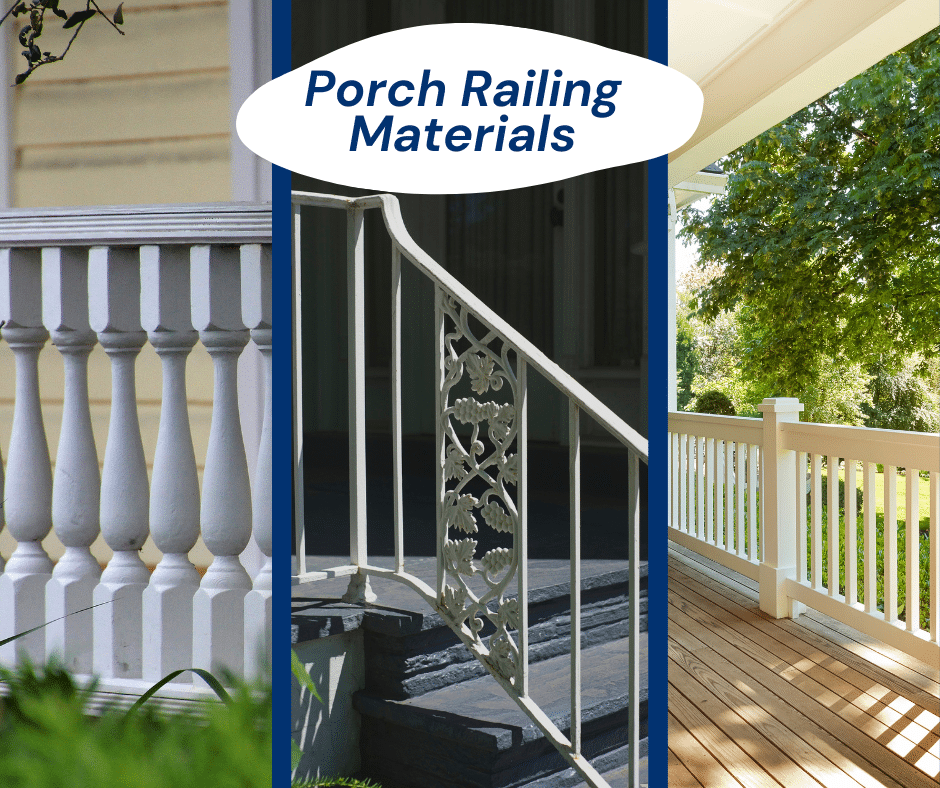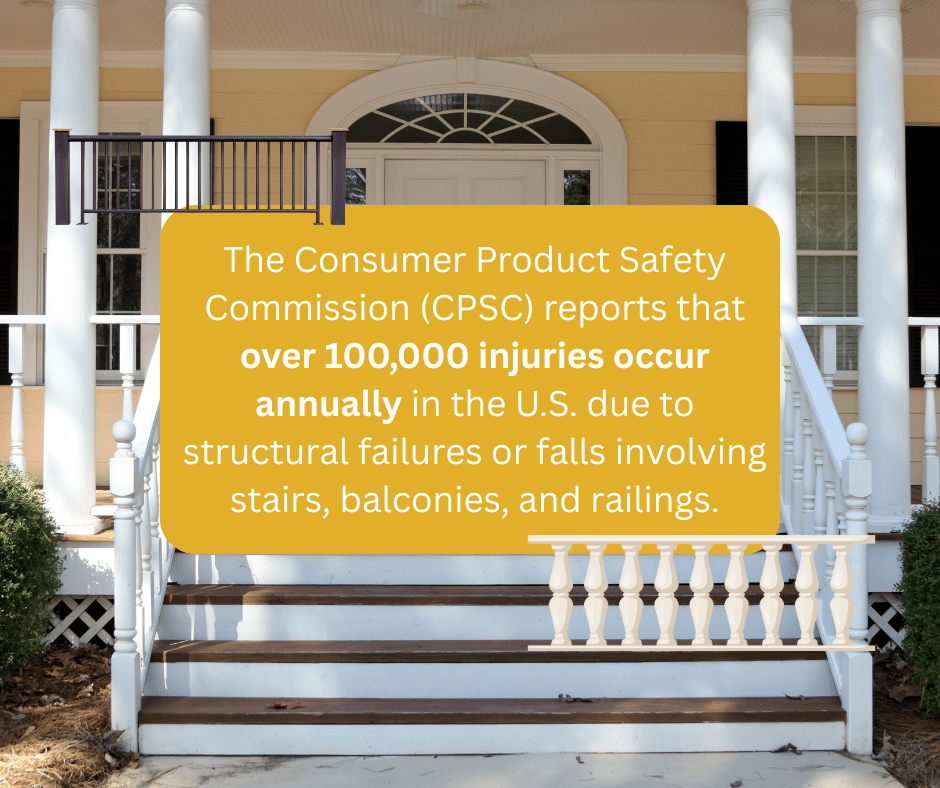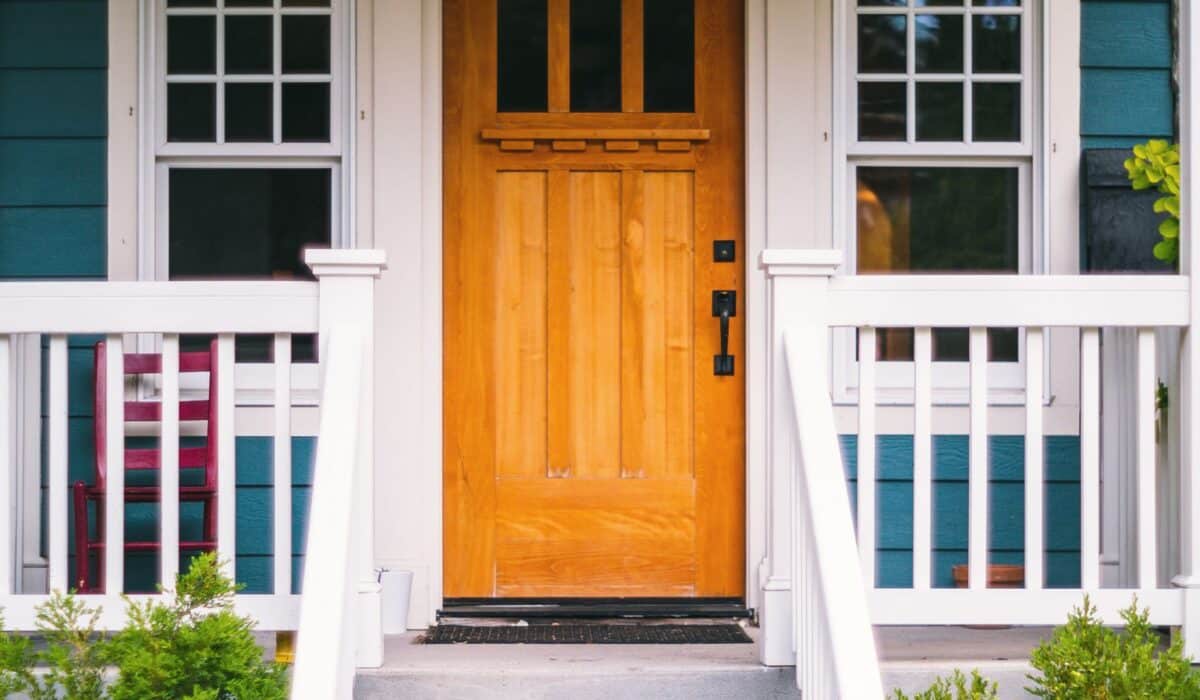When it comes to improving your home’s exterior, porch railing ideas aren’t just about looks. They’re a smart blend of style, safety, and practicality. Whether you’re planning a full porch remodel or just looking for a small upgrade, the right railing can make a big difference.
As a home inspector, I see it all. From beautifully crafted custom railings to ones that are loose, rotting, or dangerously out of code. That’s why it’s important to think through your design choices—and also make sure they’re built to last.
Let’s explore some porch railing ideas that can add beauty to your home while keeping your space safe and compliant with local building codes.
Why Porch Railings Matter
Every porch, deck, or landing that’s more than 30 inches off the ground should have a secure railing system. That’s not just a suggestion—it’s a common requirement in most building codes.
Porch railing ideas should always start with safety in mind. A sturdy railing prevents falls, guides guests safely up stairs, and can even help support aging loved ones or those with mobility concerns. But it’s not just about function.
A well-designed railing system boosts curb appeal. It frames your home’s entrance, adds character, and increases resale value. When buyers see a strong, attractive railing, they immediately feel more confident in the condition of your home.
Classic Porch Railing Materials

Let’s start with the traditional favorites. These materials have stood the test of time, and for good reason. They work with a wide range of home styles and can be customized to your taste.
- Wood is one of the most versatile options and can be shaped, painted, or stained to match almost any home design, from farmhouse to craftsman to colonial.
- It allows for complete customization, with various baluster styles, post caps, and top rails available.
- While beautiful, wood railings require ongoing maintenance, such as sealing, staining, or painting, to prevent moisture damage.
- Without proper care, wood is vulnerable to rot, warping, and insect damage—especially in humid or rainy climates.
Metal Railings (Aluminum or Wrought Iron)
- Metal offers a sleek, sturdy option that pairs well with both historic and modern architecture. Wrought iron brings timeless charm, while aluminum offers a clean, lightweight alternative.
- Aluminum is rust-resistant and durable, making it an excellent choice for low-maintenance needs, especially near the coast or in damp areas.
- Wrought iron railings can last for decades but may require repainting every few years to maintain their appearance and prevent corrosion.
- Both materials are excellent choices if you want a railing that looks sharp and won’t easily wear down over time.
- Vinyl is an affordable and low-maintenance material that won’t rot, chip, or rust, which makes it ideal for homeowners who want a hassle-free option.
- It’s available in a variety of styles, including designs that mimic the look of painted wood, without the need for sanding or staining.
- While strong and weather-resistant, vinyl can become brittle in very cold temperatures or with years of intense UV exposure.
- It’s a great option for busy homeowners looking for long-term convenience with minimal upkeep.
These traditional porch railing ideas offer reliable performance, especially when maintained properly and installed to match your home’s needs.
Modern and Creative Porch Railing Ideas
Looking for something fresh? These modern porch railing ideas take railings to the next level. They’re eye-catching and often work well with newer homes or renovated spaces.
Cable Railings
- Cable railing systems offer a sleek, industrial-inspired design that works particularly well with modern and minimalist homes.
- The cables are usually made from stainless steel and stretch horizontally or vertically across framed sections.
- They’re ideal for homeowners who want unobstructed views, such as overlooking a garden, lake, or mountain landscape.
- Installation must be precise to maintain the necessary tension and spacing that ensures safety and compliance with code.
Glass Panel Railings
- These railings use clear or frosted tempered glass panels to create a modern, open feel with no visual barriers.
- They’re perfect for homes with views you want to showcase and work well on second-story porches or elevated decks.
- Glass is surprisingly durable and resistant to weathering, but it will show fingerprints, smudges, and debris more easily than other options.
- For a clean, upscale aesthetic, glass railings are one of the most luxurious porch railing ideas available.
Horizontal Slat Railings
- This design uses long, horizontal boards or bars made from wood, metal, or composite to create a sleek, contemporary look.
- Horizontal lines can help elongate the appearance of your porch and make smaller spaces feel wider.
- However, slats must be spaced properly—generally no more than 4 inches apart—to meet building codes and prevent climbing hazards.
- This style pairs well with mid-century modern or minimalist homes and offers a nice balance of form and function.
Mixed Materials
- Combining two or more materials—like metal balusters with a wood handrail or glass panels set in a wood frame—allows you to customize the look while blending strength and beauty.
- Mixed materials can help you achieve a transitional style that bridges classic and modern design.
- These combinations are especially useful when trying to match your porch to both your home’s architecture and your personal taste.
- They also allow for creative expression and the chance to make your porch truly one-of-a-kind.
These porch railing ideas not only enhance visual appeal—they also let you create a space that feels current, personal, and safe.
Tips From a Home Inspector

Choosing a stylish railing is only half the battle. It also needs to be safe, properly secured, and up to code. As a home inspector, I often see well-intentioned upgrades that fall short in critical areas. One of the most common problems is wobbly railings. Posts should always be firmly anchored into the home’s structural framing—not just nailed into trim or siding. A railing might look secure at first glance, but it may not hold up to everyday use or meet code requirements.
Loose or rusted fasteners are another frequent issue. Over time, screws and brackets can loosen, especially if the porch is exposed to rain or temperature swings. This can cause instability and become a safety hazard, especially for children or older adults. Regularly checking and tightening hardware is a smart habit for any homeowner.
Spacing between balusters is also important. Gaps wider than four inches can create a serious risk for children and pets, who might slip through or get stuck. Even horizontal slat designs—though visually appealing—can invite climbing if not properly spaced or installed.
Another thing I often flag is improper railing height. Building codes usually require porch railings to be at least 36 inches tall, and in some areas, 42 inches. Anything shorter may not pass inspection—and more importantly, it may not protect people from falling.
Finally, I always check for signs of wood rot, rust, or general wear and tear. Even the most beautiful railing can become a liability if the materials are deteriorating. A quick visual inspection each season can save you from costly repairs and ensure everyone’s safety.
How to Choose the Right Railing for Your Home
With so many porch railing ideas to choose from, how do you pick the right one for your space? Start by thinking about the overall look you want to achieve. Match your railing style to your home’s architecture. A sleek glass railing might look out of place on a craftsman-style bungalow, while a classic white wood railing may not fit with a modern build.
Next, think long-term. Choose materials that hold up well in your climate, and consider how much maintenance you’re willing to do. If you’re not up for regular sanding and staining, steer away from wood and lean toward metal, vinyl, or composite options.
Budget also plays a role. While basic vinyl or wood railings may cost less upfront, higher-end materials like glass or custom metalwork can offer better durability and aesthetics in the long run. Don’t forget installation—DIY projects are tempting, but poorly installed railings can be dangerous. When in doubt, hire a professional to make sure everything is up to code and structurally sound.
Taking the time to plan out your porch railing ideas means fewer problems down the line, and a home that feels more “you.”
Final Thoughts on Porch Railing Ideas
Porch railings are one of the first things people notice about your home. Whether you’re into traditional wood, sleek metal, or something bold and modern, there are endless porch railing ideas to explore. But remember, safety comes first. The best railing systems blend beauty, durability, and code compliance. That’s what adds true value to your home – not just curb appeal. A stylish porch is wonderful, but it’s the strength behind the style that really counts.
If you’re planning a renovation, selling your home, or just want to be sure your porch is safe, now’s the time to act. Contact us today to schedule your professional home inspection. We’ll check every railing, step, and support to make sure your porch is both stunning and secure—for your family and your future buyers.

